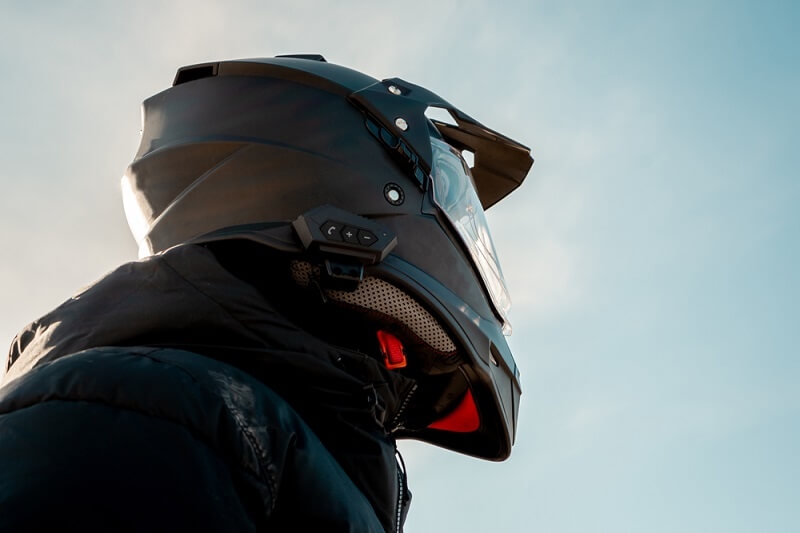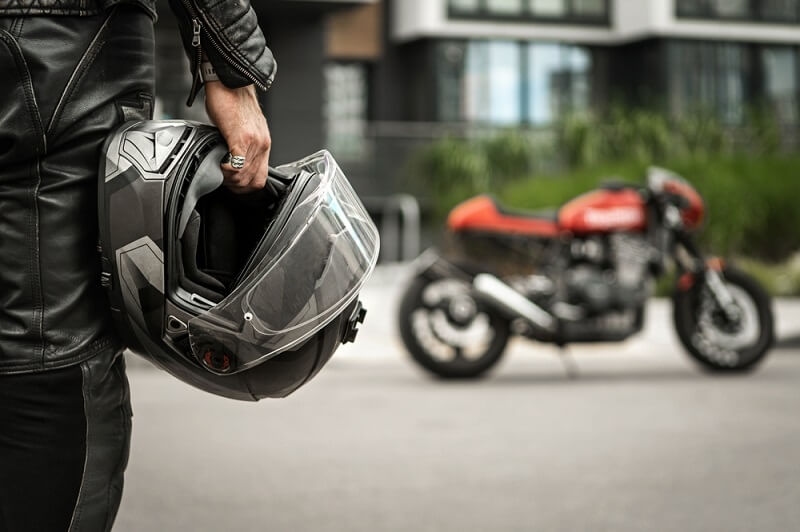
The decision on selecting the best motorcycle helmet is one of the most critical for any rider. Your helmet is more than just a piece of equipment—it is your first line of defense against injury and a significant element of comfort while riding. Whether you’re comparing safe motorcycle helmets or weighing DOT vs. Snell helmets, it is essential to understand the impact of design, material, and certification on protection.
Long-distance riders seek lightweight helmets for touring that maximize ventilation and minimize noise while ensuring safety. Within this comprehensive guide, you will find a thorough review of helmet comfort to support your decision-making process. You will cover every aspect of helmet performance, from comparisons of modular vs. full-face helmets to safety certifications—all to ensure that you have the most confidence and comfort while riding.
An optimum combination of safety, fit, and functionality characterizes the best motorcycle helmets. It is not about finding the most expensive helmet, but about finding one that fits your riding style and is verified as safe.
The core attributes of a great motorcycle helmet are:
A top helmet will give you a good blend of protection, comfort, and aerodynamics—a key component for both city riders and long-distance riders.
You cannot discuss the safest helmets without addressing the tension between DOT and Snell helmets. Both are safety certifying standards, but they do have different testing protocols and standards.
The simple point of difference is. DOT ensures a baseline safety standard for the only person riding their motorcycle, while Snell accommodates those with higher-risk travel or rider profiles. Both are safe certifications, but your riding profile should dictate your preference, whether DOT or Snell helmets are more suitable for your riding style.
One of the most critical decisions when selecting the top motorcycle helmets is choosing between modular and full-face helmet styles. Each category offers unique benefits in terms of comfort, safety, and practicality.
For everyday and high-speed riding, the full-face helmet cannot be compared to modular helmets in terms of safety. Regardless of whether a full-faced or modular helmet is selected, one of the first essential aspects of the decision is individual preference, as one may be more comfortable and functional than the other. In contrast, the primary focus of the other is just protection.

If you are a touring fan, lightweight helmets for touring are essential. A few ounces can make a difference in comfort on long rides. Lightweight helmets reduce fatigue in your neck and shoulders while still providing safety.
These helmets are especially favored by riders who spend hours on the highway. They increase endurance and ensure comfort is maintained during long-distance rides. A strong helmet comfort review often states that lightweight touring helmets are a night-and-day difference on long trips.
While style and functions are important, comfort is key. A thorough review of helmet comfort typically reveals three key elements: fit, padding, and ventilation.
When considering the best motorcycle helmets, comfort will significantly impact your focus and safety. The better-fitted and ventilated the helmet, the longer and safer it will feel, yielding fewer distractions while riding.
The best motorcycle helmets utilize advanced technology to improve protection for the rider while increasing rider awareness. This technology is often overlooked but serves a critical function when you have a helmet on during an impact or emergency.
The use of some of these features demonstrates that the motorcycle helmet industry continues to innovate, leading to both more innovative and safer riding gear.
The type of construction material has a significant impact on safety considerations, comfort, and weight. Whether you are trying a touring helmet with a lightweight version or a performance-based option, it is essential to know the differences in materials.
All three materials are designed for different types of riders. Touring riders may opt for carbon fiber for the best comfort over extended periods, while casual riders may prefer a polycarbonate helmet for its basic and affordable design.
A closer examination of helmet comfort between modular and full-face designs reveals that comfort often depends on the rider’s environment and personal style.
When it comes to long-distance touring, modular helmets provide flexibility, while full-face models remain the go-to for pure safety and aerodynamic performance.
Helmet technology continues to evolve rapidly, making modern gear smarter and safer. The next generation of safest motorcycle helmets focuses on connectivity and impact awareness.
These advancements promise not only improved safety but also an enhanced riding experience that prioritizes both protection and convenience.
The best motorcycle helmets offer an ideal blend of safety, style, and comfort tailored to your riding needs. Whether you prefer modular vs full-face styles, prioritize the safest motorcycle helmets, or value lightweight helmets for touring, investing in the right gear ensures lasting protection and peace of mind on every journey.
This content was created by AI